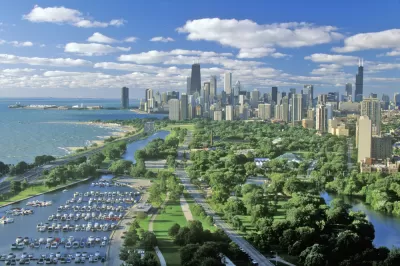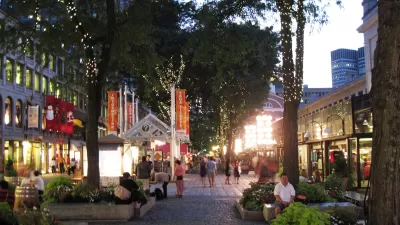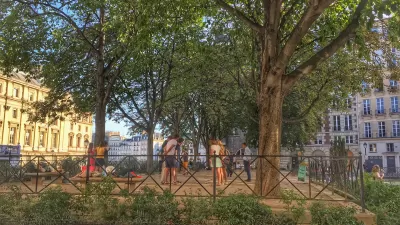Living near vegetation appears to be linked to a longer life and better mental health—for women, at least.

A Harvard study that examined more than 108,000 women over nine years found a 12 percent lower mortality rate among those living in the greenest areas, compared to those in the least green areas.
Some of the risks that appeared to be reduced by living near nature included kidney disease, respiratory disease, and cancer. But it was lower levels of depression that accounted for a full 30 percent of the benefit of greenery.
One study author clarified to CNN that these results don't mean "that people need to move far out to the country in order to live a long life"—pointing out that 84 percent of women in the study live in urban areas. But he did encourage applying the findings to urban design and park planning. "Policymakers, planners and architects may have this tool to create more healthy and sustainable places," he said.
FULL STORY: Living near nature linked to longer lives, says study

Trump Administration Could Effectively End Housing Voucher Program
Federal officials are eyeing major cuts to the Section 8 program that helps millions of low-income households pay rent.

Planetizen Federal Action Tracker
A weekly monitor of how Trump’s orders and actions are impacting planners and planning in America.

Ken Jennings Launches Transit Web Series
The Jeopardy champ wants you to ride public transit.

Crime Continues to Drop on Philly, San Francisco Transit Systems
SEPTA and BART both saw significant declines in violent crime in the first quarter of 2025.

How South LA Green Spaces Power Community Health and Hope
Green spaces like South L.A. Wetlands Park are helping South Los Angeles residents promote healthy lifestyles, build community, and advocate for improvements that reflect local needs in historically underserved neighborhoods.

Sacramento Plans ‘Quick-Build’ Road Safety Projects
The city wants to accelerate small-scale safety improvements that use low-cost equipment to make an impact at dangerous intersections.
Urban Design for Planners 1: Software Tools
This six-course series explores essential urban design concepts using open source software and equips planners with the tools they need to participate fully in the urban design process.
Planning for Universal Design
Learn the tools for implementing Universal Design in planning regulations.
Heyer Gruel & Associates PA
Ada County Highway District
Institute for Housing and Urban Development Studies (IHS)
City of Grandview
Harvard GSD Executive Education
Toledo-Lucas County Plan Commissions
Salt Lake City
NYU Wagner Graduate School of Public Service





























